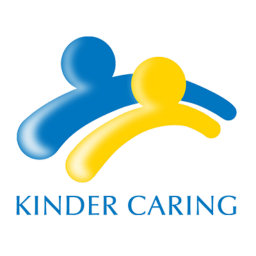Fewer Hours, Higher Costs: What the New Support at Home Pricing Means for Older Australians

Fewer Hours, Higher Costs: What the New Support at Home Pricing Means for Older Australians
As Australia moves from the Home Care Package (HCP) program to the Support at Home (SAH) model in 2025, the government promised a simpler, fairer system — one that would reduce administration costs and deliver more direct care hours.
But early pricing data from actual providers suggests the opposite: service prices have jumped 50–100%, and older Australians may now receive significantly fewer hours of support for the same level of funding.
From Fees to Inflation: What Changed
Under the old HCP model, providers charged two key overheads:
- Package Management Fee: ~10–20% of total package value
- Care Management Fee: up to 20%
Together, these accounted for roughly 30% of a client’s total funding, covering coordination, compliance, and administration.
The new Support at Home framework abolishes package-management fees entirely and caps care-management fees at 10%. In theory, that should mean more money goes straight to frontline care.
However, in the absence of price caps (scheduled for July 2026), many providers are significantly increasing their hourly rates, meaning clients receive fewer hours of care for the same level of funding.
Before looking at why this is happening, let’s examine some examples from recent fee schedules — and compare these with Kinder Caring’s pricing. The information below compares HCP and Support at Home pricing and care hours for each provider for a Level 3 HCP client.
Evidence from Sample Providers & Kinder Caring’s Pricing
Provider A
- Administrative fees are reduced from 30% → 10%
- Standard hourly rate increased from $68 → $110 (+62%)
- Available care hours per week declined from 8.3 to 6.6 hours (-21%)
Provider B
- Administrative fees are reduced from 26% → 10%
- Standard hourly rate increased from $72 → $155 (+115%)
- Available are hours per week declined from 8.3 to 4.7 hours (-44%)
Kinder Caring
- Administrative fees are reduced from 27% → 10%
- Standard hourly rate increased from $79 → $89 (+13%)
- Available care hours per week increased from 7.5 to 8.2 hours (+10%)
Both sample providers have substantially lifted service prices — Provider A from $68 to $110 (+62%) and Provider B from $72 to $155 (+115%). Despite lower administrative fees, care hours fall by 21% and 44% respectively, because the cost per hour has risen more than the reduction in administrative fees.
For clients, that means less help around the home, fewer personal-care visits, and greater reliance on family or private pay.
Why Are Prices Increasing So Sharply?
Providers are lifting prices because their business models are under strain from the 20-point reduction in administrative revenue.
Under HCP, admin fees averaged around 30%; under Support at Home, they’re capped at 10%. The work itself — compliance, audits, incident management, supervision, payroll, and client communication — hasn’t gone away, nor has the system become simpler.
Government guidance instructed providers to absorb former package-management costs into service prices. The level of fee increase this creates will naturally vary between providers, depending on the size of their previous package-management charges and how much revenue they drew from client budgets. However, it’s not hard to reach a 20–40% increase just to recover lost package-management income. If a provider also factors in some of the lost care-management revenue, the required price rise becomes even greater. So is it really surprising to see provider fee schedules now showing such significant price increases?
Surely when the government designed Support at Home and capped management fees, the intention wasn’t that clients would end up with less care than before.
The question now is what happens when price caps are introduced in July 2026 — will they bring prices back down, and if they do, what will that mean for quality and client outcomes?
Kinder Caring’s Approach
At Kinder Caring, we’ve taken a balanced, client-first approach to the Support at Home transition. While we are concerned that a 10% care-management allocation is unlikely to fully meet client needs — and expect we will deliver more care-management hours than the funding technically allows (similar to what we see with many NDIS Support Coordination budgets) — our pricing changes only incorporate the former package-management costs into service prices.
We have not sought to recover other lost revenues, such as the reduced care-management funding, through higher hourly rates.
The outcome is clear: with the same level of funding, our clients now receive around 10% more care hours under Support at Home than they did under the Home Care Package program — while we continue to provide the quality, coordination, and clinical oversight that underpin positive client outcomes.
